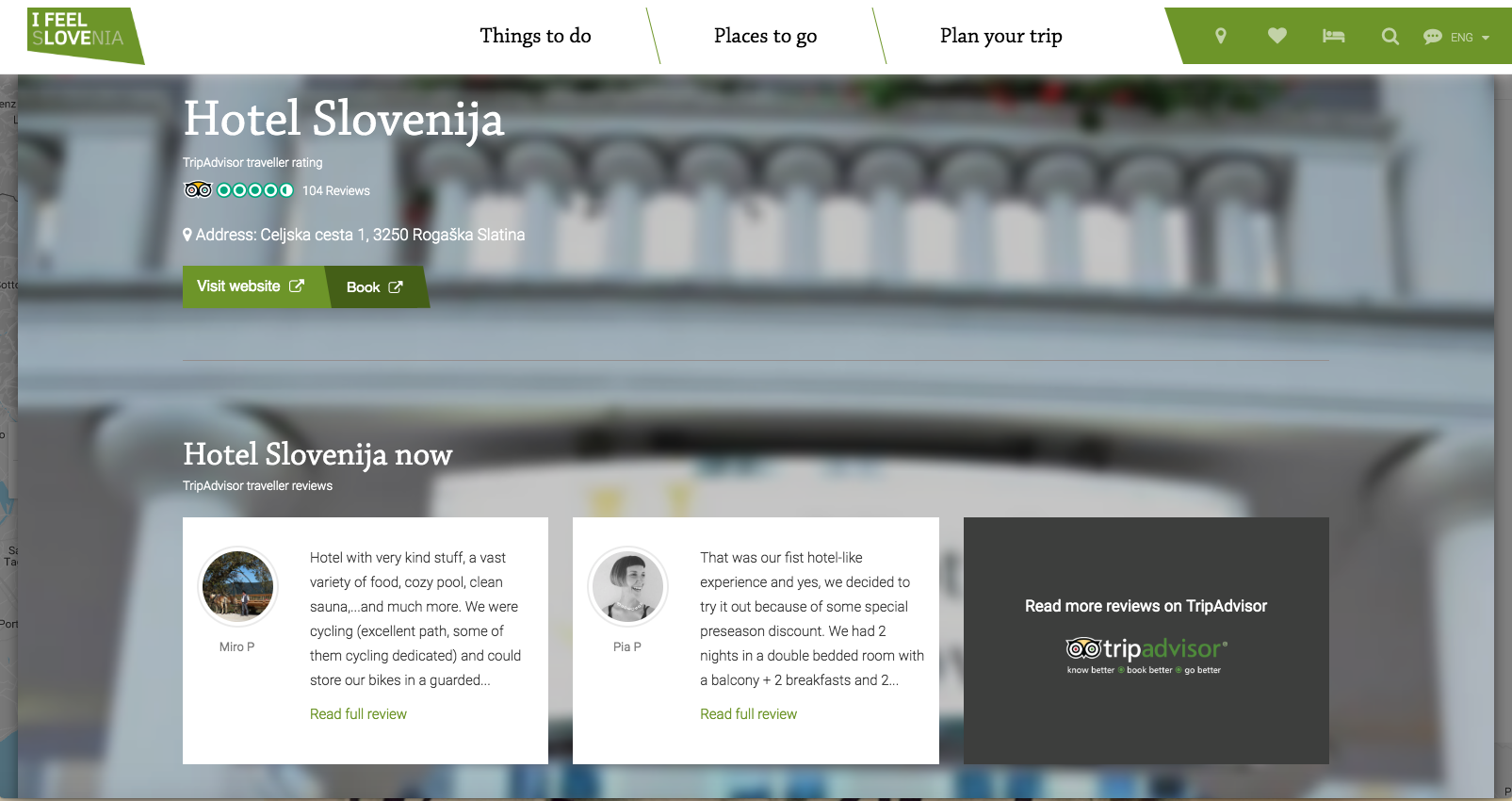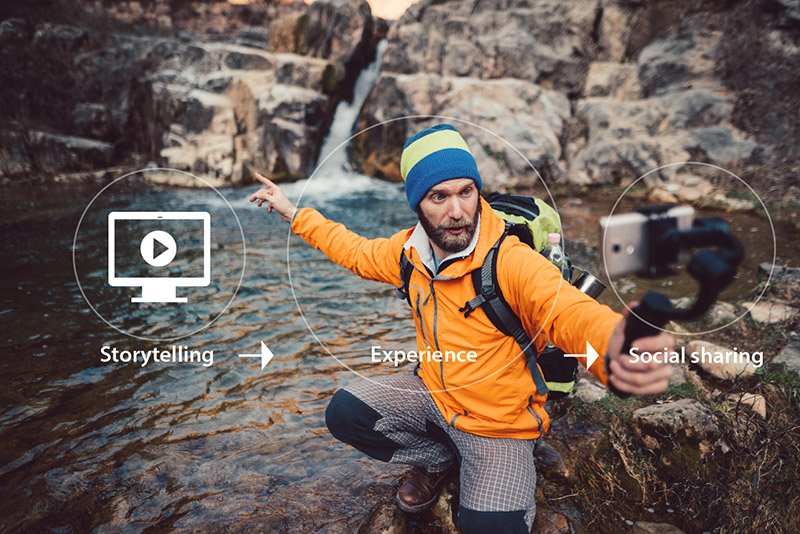How to Tackle a Destination Website Redesign


The world is beautiful. And this can be a problem. At least for many national or regional tourism boards who find it increasingly difficult to compete for potential visitors. In a crowded market filled with all the wonders of the world, how can you stand out from the competition? How can you attract new visitors?
According to Expedia, a typical traveler visits 38 sites before booking.
In the 12 weeks leading up to a trip, there are 3X more experience searches than hotel searches and 8X more experience searches than air searches.
Source: thinkwithgoogle.com
With countless online resources travelers can access, does considerable investing in a tourism website make sense? And if yes, how to make it useful? After checking social media for what previous visitors have to say about the destination, eventually, travelers will want to hear what the destination has to say to them. Hence, the website remains a pivotal touchpoint in any destination marketing initiative. It is a place where the destination experience starts.
Poor images, outdated content, and long response times can easily be projected on the destination experience as a whole, deterring potential visitors and making them consider other alternatives.
I don’t want to scare you. It is just that you will have to do many things right to achieve the outcome you strive for.
This guide focuses on key areas that a tourism board or a DMO needs to consider to make their tourism website project a success. It will teach you:
But first, you need a plan.
This article presumes you already have some kind of overall destination marketing strategy in place.
You should have a sound understanding of who your visitors are, what drivers them to your destination, and, even more importantly, what are the obstacles that deter them.
Finally, you should have a visual identity system in place, and you should have a clear understanding of what are the unique attributes of your destination.
Let’s dive into the website’s role in the overall marketing strategy of your brand. What must come about for the project to be successful? How will you measure success?
You know who your most profitable visitors are and you want to attract more of them. Is your goal merely to inspire them, leaving the booking part to your partners, or do you also plan to help them with trip planning and booking? And if this is the case, will the site own the processes, or will they be done via third party integration? Considering the integration - do you simply plan to embed the third party's code or do you have deep integration in mind?
The examples above are just a small fraction of questions that you need to have answered to give you a clear picture of what you are trying to achieve.
And most importantly - who is entitled to answer such questions?
A destination’s website seems to be everyone’s business. It is usually owned by a local/regional/national tourism board and has many stakeholders. Next to the delivery team there are hotels, agents, service providers and related businesses, influencers, local communities, etc.
And as we all know, a website can mean many things to many people.
Typically in such projects, there is no absolute authority to impose strategic decisions. Consensus is the name of the game. Though a board may own the project, they have to rely on their soft management skills not to vex the stakeholders upon whom the project is dependent.
Each of the stakeholders may believe their goals are the most important. Even so, the tourism board must be able to bring focus to shared strategic directions while considering their interests as well.
Aligning the stakeholders on the main solution principles and project goals is crucial for the success of the project.
It is your job as a project owner to
I didn’t say it will be easy.
In addition to their different opinions and goals, stakeholders may have limited knowledge in digital marketing. You will have to educate them first and conduct several workshops to help them understand the basics of website design. And don’t overburden them with technology. Focus on fundamental principles instead and discuss
Once you have reached consensus on these principles, write them down.
The Solution Principles Document should be written in plain English without unnecessary technical jargon. It does not aim to provide answers for everything. It is about high-level decisions that frame the ultimate solution and related editorial policies.
The document may be updated later on to correct assumptions, setting new choices and updates. But it will require some formal process to make any significant changes after a sign-off has occurred.
The Slovenian Tourist Board did a great job of setting clear solution principles and project goals. They presented the potential solution providers with the primary site structure, corporate identity guidelines, user personas elaborate, old site fit-gap analysis, and various market insights.
Make sure the document is approved and signed off by all the stakeholders' representatives (usually summoned in a steering committee).
Now you have the green light to take off.
It is time to get more technical. To layout fundamental architecture, design directions, and scope, you will have to determine
Now you can estimate the resources needed and set a timeline for the project. You can use a Solution Outline document as a tender for the subsequent phases like solution design, development, and hosting services.
On the flip side of the business objectives, there are user expectations. If you market a region or a city with a wide range of offerings, you will attract very different visitors profiles: foodies, action seekers, culture geeks, socializers, etc.
Each of them with their own distinct set of questions, desires, hopes and fears.
As each profile requires a separate content and social marketing approach, the effort multiplies with the number of profiles. The amount of work can easily become overwhelming. So if you don’t want to lose the compass, try to limit them to 3- 5 user personas that represent your most profitable visitors.
The buyer journey in tourism is an iterative, circular process, typically consisting of five stages: dreaming, planning, booking, experiencing and sharing. It is vital to have in-depth knowledge of all customer touchpoints, whether online or offline. Considering the stages you plan to cover on the destination website, what content do you need?

Draft an experience map to analyse the journey of each persona, including emotional states and pain points. Ask yourself which of these can be addressed by the website and how you can meet their specific needs.
From dynamic content and tagging to automated optimization tools and chatbots, there is a variety of options through which the tourism website experience can be tailored to its visitors. Use their activity data to identify their expectations and develop personalized services for them.
Choosing a holiday destination is a stressful process. We have all been there before. We are distrustful. There is no free trial, so if we make a bad choice, we may ruin the "time of our lives". We are after great memories, not frustrations. How can this uncertainty be reduced?
The first attribute that comes to mind is - trust.
To have any positive effect on prospects, your destination's website has to be believable. It may sound ironic but unrealistically beautiful photos and a cheesy narrative full of superlatives can have the opposite effect.
Be sincere. Employ user-generated content to provide evidence for your claims, thus increasing your users’ confidence.

Product descriptions on www.slovenia.info drive on testimonials and comments on social media as social proof.
Your destination is unique, so telling a distinct narrative shouldn't be difficult. Storytelling is great for SEO and can generate traffic. But you have to put it in the context of various personas and answer their specific questions along the way. Is it suitable for children? What does cuisine look like? Can I hire a mountain guide?

With that said, words alone are not always the best way to tell a story. First impressions count, and it takes an eye-catching photo or a video to forge an emotional link with the user in the first few seconds of their visit to the site. Use great images to underscore the narrative but avoid stock images at all costs. Users can always tell a stock image from an authentic one, and once they do, there goes your credibility.
Your stories sound nice, but are they believable? You have to counterbalance them with user-generated content that provides social proof. Leverage user analytics to find the right mix.
The same goes for well-known attractions and must-sees. They may be beautiful, but in reality, they are usually over-commercialized and overcrowded or even dull. Amend them with some hidden gems that tease and provoke excitement.
Trip Planner Australia offers visitors a choice of their personalized mix of attractions and experiences.
Invite visitors to co-create your website. Why? Because social media is the most effective and affordable way of marketing. You will employ your visitors who will be happily selling for you 24 hours a day, seven days a week, for free!
Use visitors’ social media postings to support your main story. And vice versa - Invite them to tag and rate your content and to share photos on social media.
www.slovenia.info encourages users to pick their favorite photos and share them on social media.
Nothing shows experience, quality, and safety better than endorsements and testimonials of previous visitors. Scatter them all over your website. Short and digestible as they usually are, they provide the evidence users seek: People have been there before me. They look well (it is safe) and happy (value for money).
Nothing can improve your bottom line better than a coherent social media strategy.
Leverage flat architecture and streamlined navigation to allow users to land at the content of their interest in no more than three clicks, regardless of the device they are using.
Employ user data analytics and customer journey mapping to ascertain what content users prefer on mobile devices and what tasks they perform on their desktops. Adjust the design accordingly.
Offer an interactive map where users can research points of interest and filter them according to their preferences. On www.visitnorway.com, an interactive map provides a good overview and helpful first glance information on points of interest. And with the click of an icon on the map, users can access additional details further exploring the destination.
While using emotions in your narrative helps to establish emotional bonds, do not forget that users come to your site for a reason. They are looking for practical information and advice. Provide them the right information in the right places. Where appropriate, offer specific insights that can't be found anywhere else online. This way, you demonstrate insider knowledge about the destination, building credibility among potential customers.
What are your visitors after? Ask them. Employ guided decision-making, trip planners, and chatbots to help users filter out the most relevant content and organize their trip around it. This way, you will motivate them to move closer to the end goal: the booking.
Usually, solution design articles end with - well - solution design. However, I think it is important to tackle the development principles as well.
They say an idea is only as good as its execution. Creatim's developers practice the DevOps approach to avoid typical dissonances between solution design, development, and operation teams. Sometimes it takes just a minor design adjustment to facilitate the development process and avoid unnecessary costs. It pays if the teams talk to each other.
What good is a great solution design if it takes 10 seconds to open a link or if the functional copy in the Russian version is mixed with English or if it is a challenge for editors to find a particular content in a different language version? To avoid such issues onboard a solution architect early in the process and choose a CMS wisely (more on that in a moment).
Considering the many stakeholders we have mentioned above, what you are building is not just an ordinary website. It is more like a hub where service providers, journalists, agencies, and photographers collaborate, share information, and create new experiences for visitors.
Therefore you need two highly integrated portals with very distinct types of users: one for the visitors, one for the businesses. Each with its requirements, tooling and different user interface.
Moreover, the project typically requires a range of integrations (media server, booking server, CRM, social, analytics, marketing tooling, partner websites…) and presents content in several languages and scripts.
This complexity ensues with some technical implications.
The site's structure can impact performance, stability and security targets. Hence, it must be considered with due diligence.
I am not going to favor any technology vendors or platforms. There is a wide range of options on the market to choose from. In my opinion, it is far more important to employ an experienced architect early on and a capable development team with a track record of delivering solutions of similar scope and complexity.
To pick the right team, ask your architect to prepare a functional specification that highlights:
This document should be part of your RFI. Ask potential vendors
A content management platform is the heart of your forthcoming solution. As mentioned above, there are many quality solutions on the market. Which one you should bank on depends on your specific requirements.
Choose 1- 3 candidates and perform a fit-gap analysis. Considering your requirements, ascertain what functions are covered out-of-the-box, which ones need additional adjustments, and which ones require a development from scratch.
While responsive design, security, and privacy should be no brainers, there are specifics of a tourism website that CMS needs to support:
Make sure to adequately address these topics to assure the site’s future development and avoid administration overload.
Are you preparing for take-off, or have you already seen some results? I’d love to see your insights. If you miss some important aspects of the tourism website design in the article, please let me know. I’ll see what I can do about it:)
And if you need help with tourism website design, let us know also.